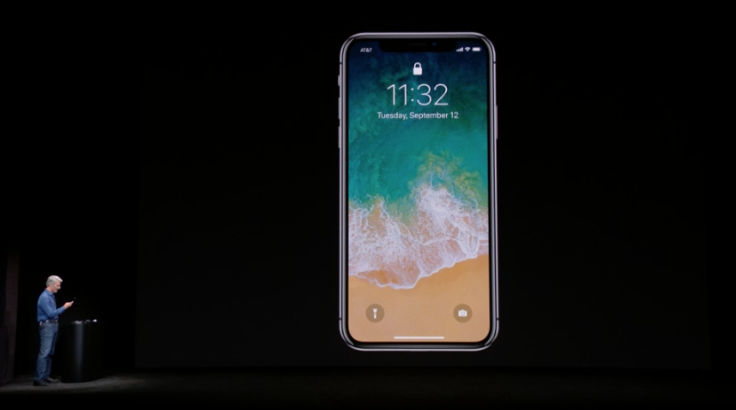Apple iPhone X Reviews: Face ID, New Screen Features Of Smartphone

Apple gave the world the first look at the upcoming iPhone X at its launch event Tuesday and the high-end smartphone — with an equally high-end price — will include a suite of features not seen on past iPhone editions.
Face ID will be one of these newer updates on the iPhone X. Via a new front-facing camera, the iPhone X will use your face to detect when you’re using the phone and replaces the fingerprint-based Touch ID used on past releases. Digital Trends said the technology works fairly seamlessly and points out that while Apple wasn’t necessarily first to market with Face ID, it’s still extremely smooth to use.
Microsoft Windows Hello brought us face recognition in Windows 10-based computers, and in my experience, it’s been lightning quick. I didn’t get to enroll my face with the iPhone X – we’re looking forward to putting the phone through it’s paces – but I saw Face ID in action, and Apple has brought a similar speedy experience to the phone. The Galaxy S8 can unlock through iris and facial recognition, which is similarly quick, but infrared cameras and software that map the contours of your face in real time make Apple’s implementation much more secure (as well as more complex and harder to do). Heck, it even works in the dark.
Elsewhere on the iPhone X, part of the reason why the phone dropped Touch ID was from its expanded screen. Unlike past iPhones, the X’s screen runs across its entire front face and cuts out the bottom bar that typically holds the fingerprint sensor. Wired said this new format will take some getting used to for iPhone owners weaned on a physical Home button.
Since there's no home button, you swipe up from the bottom of the screen, pausing for a second mid-swipe if you want to open the multitasking menu instead. The gesture's not terribly intuitive, but works well enough. If you swipe down from the top of the screen, you'll now get either Control Center or notifications, depending on which side you swipe from. Again, relatively simple, but different from what you're used to.
Physically, the iPhone X is anchored around its deluxe Super Retina display. According to Apple, the 5.8-inch screen sports a 2,436 x 1,125-pixel resolution and features a 458 ppi. The Verge said that the X’s screen was sharp and high-performing for a high-end smartphone.
It’s super sharp to look at and punchy and vibrant as you’d expect from an OLED screen. It has all of Apple’s signature tech, too, including 3D Touch and TrueTone automatic calibration. I’ve generally preferred LCDs to OLEDs, but the X OLED display doesn’t seem to share any of the extreme oversaturation or pixel matrix weirdness of other OLEDs I’ve seen.
© Copyright IBTimes 2024. All rights reserved.





















